Extract from The Guardian

Picturing western Queensland as the floor of an ocean takes imagination – but it doesn’t take long to find evidence of prehistoric plenty
Last modified on Wed 9 Jun 2021 03.32 AEST
It did not sound like fun, breaking rocks under the tropical sun in the hope of finding fossils. But before the first swing of a geological hammer, there it was – the smooth grey arc of an ancient sea shell embedded in rough stone.
We had started early to avoid the heat. At morning tea we laid out our hoard of treasures: bones, belemnites and the bulbous blocks of prehistoric poo known as coprolites. Then we grabbed our hammers and brushes and went back for more. Fossil fever had captured us.
We were at a public dig site near Richmond in north Queensland, where the rocks of the 100m-year-old Toolebuc Formation are exposed on the surface. These rocks are famous among palaeontologists for the diversity of fossils within them; we were not going to miss this opportunity to rummage through deep time. Fossicking in the formation was the first stop on our tour along Queensland’s dinosaur trail, which took us 700km across the state from Richmond to Boulia.
In 1989 a grazier, Ian Ievers, found a strange fossil sticking out of the ground on Marathon station near Richmond. When he and his brothers cleared away the dirt, they uncovered a toothy, long-jawed skull and the first few vertebrae of a skinny neck. Marathon station had long been the site of interesting discoveries but this was different. Recognising it as something unusual, the brothers contacted the Queensland Museum in Brisbane. What they had found was an almost complete skeleton of a giant seagoing reptile called a plesiosaur.
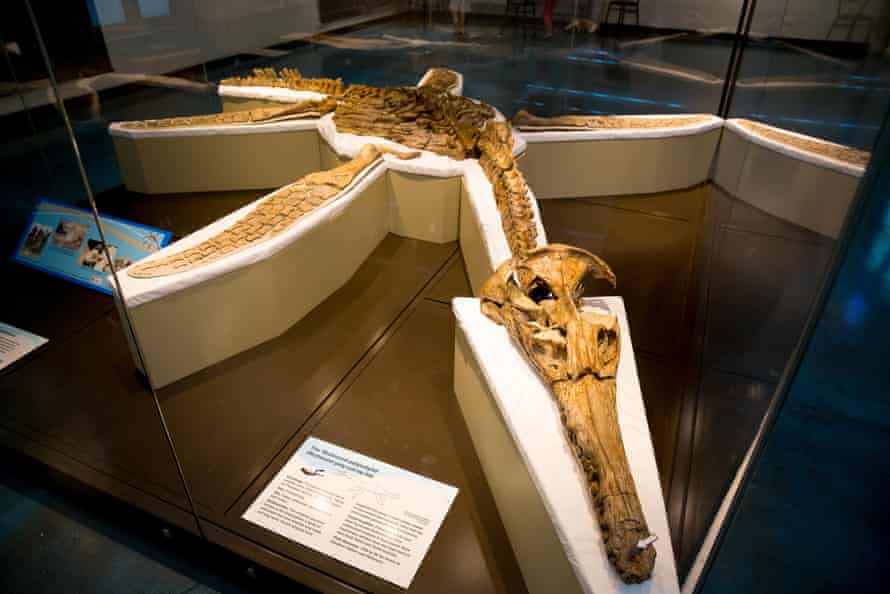
The most complete fossilised remains of a kronosaurus on display at Kronosaurus Korner in Richmond. Photograph: NDK/Alamy
The museum arranges expeditions to public dig sites, and many of its hundreds of specimens have been donated by fossickers working at those sites. Others have come from local cattle stations. This synergy between pastoralists and palaeontologists has driven the development of the dinosaur trail. Now, tourists looking for local adventures are making the big drive across the state.
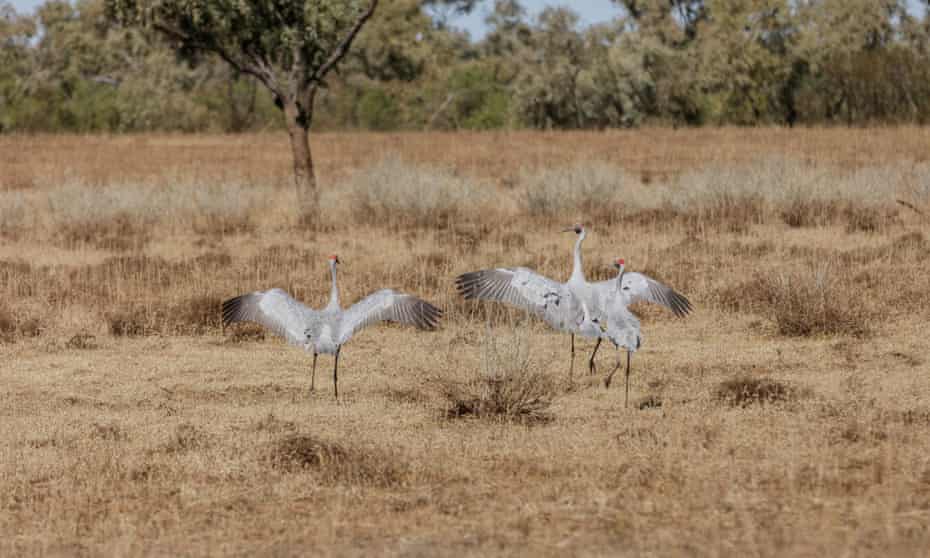
Emus and brolgas wander over sun-bleached plains near Winton – land that was once a vast sea that stretched from the Gulf of Carpentaria to New South Wales. Photograph: Phil Copp/Getty Images
It takes imagination to picture western Queensland as the floor of an ocean. At this time of year, the sky is cloudless and the creeks empty. Emus and brolgas wander over sun-bleached plains. But when Penny was alive, plesiosaurs swam in a vast sea that stretched from the Gulf of Carpentaria to New South Wales and extended west into central Australia. The sea is long gone but its legacy persists in the rock layers packed with remains of prehistoric marine reptiles, including dolphin-like ichthyosaurs and the huge predator kronosaurus.
Outside
the Richmond museum, a life-size model of a kronosaurus sits and glares
at passersby. It is 10m long and a third of that length is a pair of
monstrous, crushing jaws, lined with teeth like railway spikes.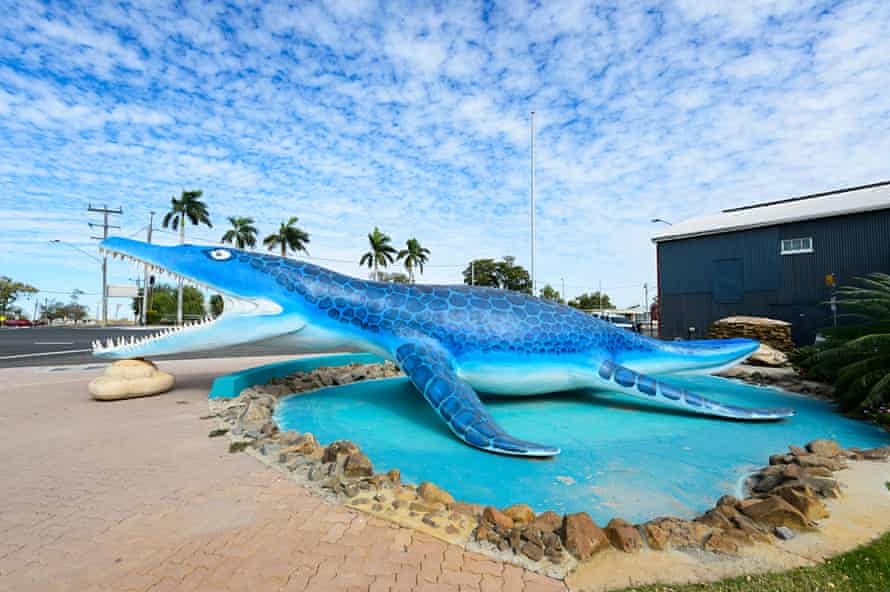
A life-size model of a kronosaurus greets visitors to Kronosaurus Korner. Photograph: Genevieve Vallee/Alamy
But as any small child can tell you, no matter how big they are (or how ferocious they look) marine reptiles are not dinosaurs. To see dinosaurs, you have to head south to Winton and beyond.
Ninety-five million years ago the Winton area was covered in swamps and lakes fed by permanent rivers and surrounded by dense vegetation. Dinosaurs lived and died on shores and in shallow water, where their bodies and footprints were quickly covered in mud and silt.
The rocks around Winton yield land-dwelling dinosaurs – long-necked, long-tailed, tree trunk-legged titanosaurs; chicken-sized coelurosaurs; and the carnivorous australovenator, which shredded its prey with claws as curved and sharp as sickles. These animals are preserved as bones and teeth, and as spectacular trackways of footprints.
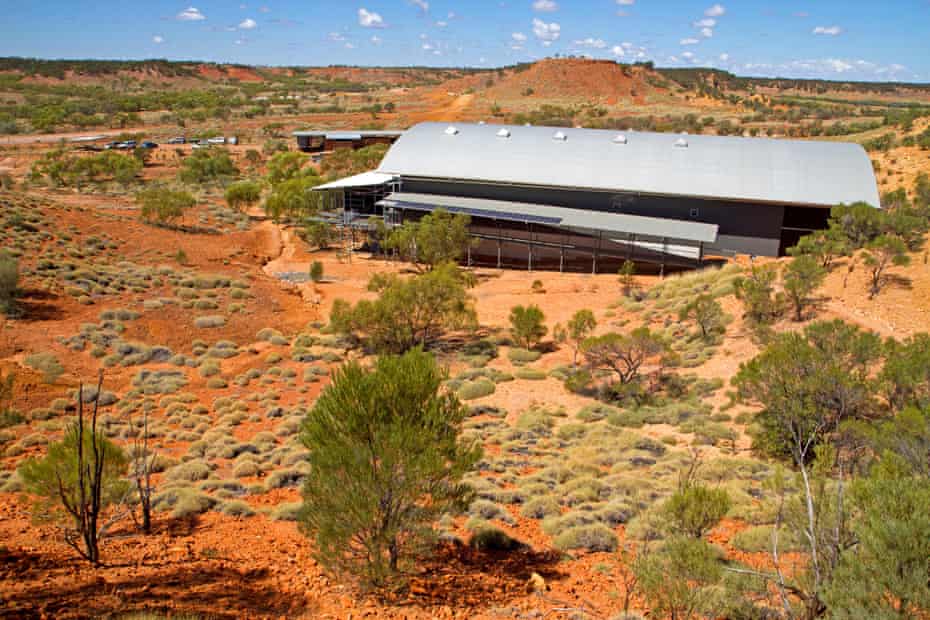
Lark Quarry Dinosaur Trackways, the site of one of the world’s only recorded dinosaur stampedes. Photograph: Andrew Bain/Alamy
The best-known trackway is at the Dinosaur Stampede National Monument at Lark Quarry. Protected from the elements in a rammed earth building, the prints tell a story of a peaceful prehistoric day shattered by the arrival of a hungry predator. Three species of dinosaurs left their marks in the mud. A guide interprets them for visitors, explaining the way in which the impressions change as their creators pursued or fled. This is CSI: Cretaceous Period.
First stop is the laboratory where rock matrix is removed, millimetre by millimetre, from dinosaur skeletons. The next stop is the collection room, where the bones of Banjo the killer Australovenator, and Matilda, a leaf-eating Diamantinasaurus, are on display. The two animals were found together but theirs is almost certainly not a love story.
The museum has its own trackway of sauropod footprints. You can almost feel the ground shake with their giant steps. Finally, visitors follow a path through rocky canyons, with ancient plants and statues depicting the Lark Quarry stampede.
The Australian Age of Dinosaurs owes its existence to David Elliott, on whose cattle station many of the fossils were found. Elliott championed the museum and built research facilities on his property to allow palaeontologists to work on the Winton fossils. In 2006 Peter and Carol Britton donated 1,400 hectares of Mount Landsborough Station for the site of the new museum. The rest is (pre)history.
On Monday Australia’s largest dinosaur, Australotitan cooperensis, was scientifically described and named by the scientists at the Queensland Museum and the Natural History Museum at Eromanga. That tiny town, about 600km south of Winton, gave its name to the big sea that once stretched around it. Eromanga’s Natural History Museum now offers digs and tours, and promises more exciting discoveries to come.
We also missed the muttaburrasaurus at the Flinders Discovery Centre in Hughenden.
It is hard to squeeze 100m years of the Earth’s history into a 10-day trip but it was worth the effort.
Getting there
This article includes content provided by Google. We ask for your permission before anything is loaded, as they may be using cookies and other technologies. To view this content, click 'Allow and continue'.
The dinosaur trail is in a remote area, with long driving distances through harsh environments, especially if it is extended to include Eromanga and surrounds. An appropriate vehicle and plenty of water is a must.
The nearest domestic airport to the start of the Australian dinosaur trail is Mount Isa, which is four hours’ drive west of Richmond, or three and a half hours’ drive north of Boulia. A round trip from Mount Isa, excluding Eromanga, covers more than 1,500km.
The nearest domestic airport to Eromanga is Quilpie, with flights departing from Brisbane twice a week. Car hire is limited but coach transfers can be arranged between Eromanga and Quilpie airport via the Eromanga Natural History Museum.
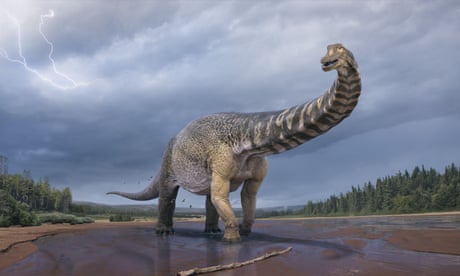
No comments:
Post a Comment